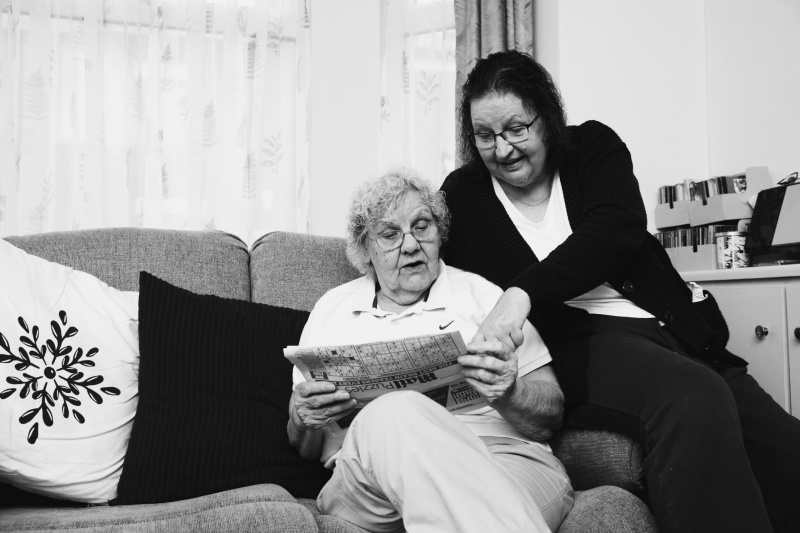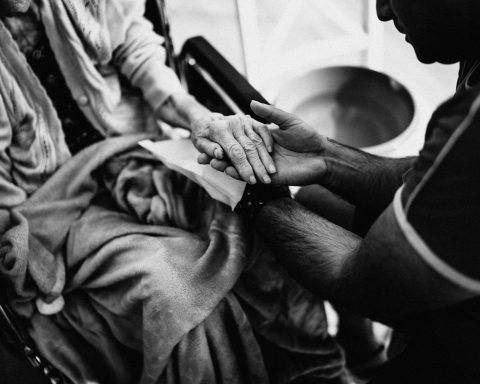Society often associates the term’ burnout’ with aspects such as work and education. However, women caregivers turn out to be one of the biggest populations who experience such phenomena.
As a woman caregiver, your responsibilities extend beyond caring for your family. In fact, you have to juggle numerous tasks, such as handling household chores, providing emotional support, managing finances, and often working as the family’s primary provider. As a result, you may experience extensive fatigue and burnout.
This article will help you understand everything about burnout among women caregivers, from its roots to its characteristics, as well as strategies for tackling it. Ultimately, you’ll learn how to develop resilience in the face of the multiple challenges you may encounter.
Read below to learn how you can maintain your well-being and boundaries as a caregiver.
Understanding women’s caregiver burnout
Being a caregiver means taking care of someone else by helping them with their daily activities. Besides providing physical assistance, you are often required to perform emotional labor such as nurturing and providing comfort.
Moreover, cultural norms believe that emotional availability is an intrinsic skill for women. This intensifies the burden, as most cultures idealize women as natural caregivers. Ultimately, this demand can lead you to prioritize others and neglect your own emotions.
Statistics show that women caregivers are battling with daily stress. Nearly 20% of female caregivers aged 18 to 39 reported experiencing constant stress, almost double the rate compared to non-caregiving peers and male caregivers in the same age group. Over time, if this issue is left unaddressed, it may become a significant trigger for caregiver burnout and fatigue, resulting in a decline in women caregivers’ resilience and overall well-being.
But before you can learn to prevent and address your burnout, you need to understand what it is.
Recognizing signs and symptoms
Many women caregivers, including you, are not aware that they are exhausted. As a result, you may feel physically and emotionally overwhelmed. Recognizing the symptoms of burnout is the first step in understanding the well-being of caregivers.
Here are some signs you might be experiencing it:
- Chronic fatigue. If you are experiencing persistent physical and emotional exhaustion, this may be an early sign of burnout. This fatigue is distinct from the usual fatigue, as it persists even after taking more time to rest.
- Being overly sensitive. Mood swings might also cause burnout. Experiencing feelings of isolation and being unsupported can lead to frequent frustration, anger, and sadness.
- Sleeping problems. Sleeping is supposed to recharge your energy after a long day. However, having high stress and feeling overwhelmed might cause trouble in your sleep. As a result, you will experience difficulty in falling or staying asleep.
- Physical exhaustion. If you are experiencing ongoing tiredness that doesn’t improve with rest, it may be a sign of caregiver burnout. The exhaustion makes your body feel drained, and your energy is low; even simple tasks can feel overwhelming. Physical symptoms, such as headaches and muscle aches, may also appear.
Impact on identity and autonomy
Caregiver burnout can have a significant impact on your sense of identity and autonomy. When caregiving demands intensify, you may start to blur the boundaries between yourself and your role as a caregiver. For example, you might consider quitting your career to become a full-time caregiver.
Caregiving sacrifices can have a significant impact on long-term personal goals, as they often force you to either postpone or completely abandon what you once valued.
For example, you might think pursuing higher education is impossible for a caregiver, as it requires both time and dedication. Additionally, your physical health is often overlooked. Full-time caregiving limits the ability to exercise regularly and prioritize self-care.
The ongoing sacrifices might lead you to frustration, exhaustion, and resentment. As a result, it is common to start isolating yourself from your sense of independence. Over time, this can impact your confidence and decision-making ability.
Practices for developing resilience
Since caregiving affects many aspects of a woman’s life, it is crucial to have clear, science-based solutions to help address these challenges.
These insights can help you cope healthily and prioritize your well-being, even while fulfilling your role as a caregiver.
Setting and maintaining healthy boundaries
Setting boundaries as a caregiver is essential for maintaining a balanced life, especially for those who are also employed. True work-life balance minimizes the possibility of caregiver fatigue. However, reaching this balance is often challenging for many women caregivers.
Here are some tips to set and maintain healthy boundaries between work and caregiving:
- Define your non-negotiables. Identify your priorities both in caregiving and work. Once you’ve established them, stick to your lists in order to stay focused and track your activities.
- Communicate clearly. Although caregiving roles are often associated with women, that does not mean that you have to carry the responsibilities alone. If you have a partner, clearly communicate your expectations of sharing the burden. Clear communication about roles and responsibilities helps both of you maintain a balance easily.
- Learn to say no. Taking on too much can quickly lead to burnout, especially when you feel pressured to meet everyone’s needs. Saying no does not make you selfish; it makes you assertive. On the other hand, it helps you to protect your energy and mental health.
Reclaiming personal time and space
Neglecting yourself can be one of the biggest triggers of caregiver stress. Therefore, practicing self-care and making time for yourself is the best solution.
Having time for yourself can help you connect with your true self, which is your identity beyond being a caregiver. As a result, you will have the opportunity to reduce caregiver exhaustion by allowing yourself to practice self-expression, a key to personal resilience.
Here are some activities you can try to spend your personal time:
- Light body movement. By regularly doing light workout activities, you can relax and reduce physical tension in your body.
- Casual reading. Reading helps you reflect as well as gain personal enrichment, which in turn strengthens your identity.
- Small rituals. Daily rituals can help you reconnect with your inner calm. These routines will give you a sense of control, which is beneficial to stay grounded and emotionally balanced. For example, enjoying a cup of tea in the morning or taking a short outdoor walk.
Read more: Healthy Habits for a Balanced Life: How to Prioritize Self-Care and Wellness
Building emotional support systems
Having people who are willing to support you emotionally gives you a social and psychological safety net.
Emotional support systems help you feel supported and make it easier to express your feelings. You won’t feel isolated, making you more resilient when facing caregiving challenges. Here are some ways to build emotional support systems:
- Find your comfort people. Caregiver burnout often leads to isolation, especially when you get too overwhelmed. Talking to your comfort people, such as friends, family members, or neighbors, can lighten your emotional load.
- Join a support group. Finding people who understand you can be incredibly healing. Join a support group to share your story, seek advice, and make friends. It reminds you that you are not alone in your journey.
- Delegate when possible. Being a caregiver does not mean you have to handle everything on your own. Asking for help with daily tasks, such as meals or errands, can give you time to recharge and make caregiving more manageable.
Mindfulness and stress reduction techniques
Mindfulness is a proven effective way to reduce stress. It offers relaxation, helping you healthily cope with stress. By practicing mindfulness, you can recognize your emotions without feeling judged, thereby enhancing your resilience.
Here are some daily habits you can try to promote mindfulness:
- Breathing exercise. You can start by focusing your attention on your breath by observing how you inhale and exhale. This activity will help you to regulate your nervous system, bringing calmness whenever you feel emotionally drained.
- Meditation. Meditating can be a great option to reconnect with your body if you do not have much time. You can practice it by finding a quiet space and starting to close your eyes to focus on either sound, body, or images to improve your emotional balance.
- Journaling. Writing down your thoughts and feelings can be a powerful way to process the emotional weight as a caregiver. Furthermore, it gives you a safe space to express frustration and reflect on your experiences, helping you to reduce stress and anxiety.
Read more: Reaching a Higher Sense of Self Through Mindfulness
Accessing caregiver resources and professional help
When everything becomes too overwhelming, seek professional help.
Not only do professionals have more knowledge about these challenges, but they also provide a safe and non-judgmental space for you to unpack emotions that you often carry alone. Professionals can provide the appropriate support, enabling you to develop positive coping strategies and adopt healthier perspectives.
Here are some steps to recognize whether or not you need to access caregiver professional support:
- Recognize the early signs of burnout. You can start by regularly practicing self-check-ins to gain a better understanding of your condition, both mentally and physically. This action can be done by utilizing a digital journaling app.
- Identify the available support resources. Create a list of potential support resources for caregivers in your area. This might include local and online resources, community health centers, hospital social workers, or government portals.
- Make it regular. Turn sharing your caregiver problems into a habit by including mental health check-ins during routine doctor visits, or seek a referral to a therapist experienced in caregiver stress.
In conclusion
Women and caregiving are two things that are likely to remain closely linked in society’s mind for some time.
However, it is essential to note that being a caregiver does not mean you have to sacrifice your priorities and personal needs. In contrast, maintaining healthy boundaries can help you perform better as a caregiver while preserving your authenticity.
If you are a woman caregiver who starts to feel overwhelmed by your role, take time to reconnect with your true self. Because your well-being matters the most.
If you want to see more resources on caregiving, check out the Personal Resilience Science Labs. The lab uses the research of the Institute for Life Management Science to produce courses, certifications, podcasts, videos, and other tools. Visit the Personal Resilience Science Labs today.
Photo by Centre for Ageing Better on Unsplash




